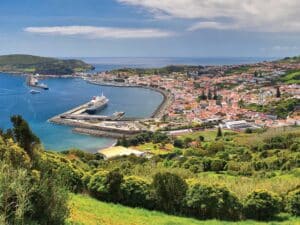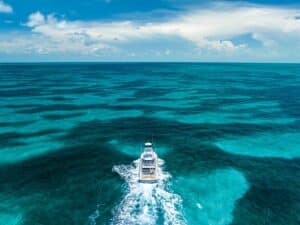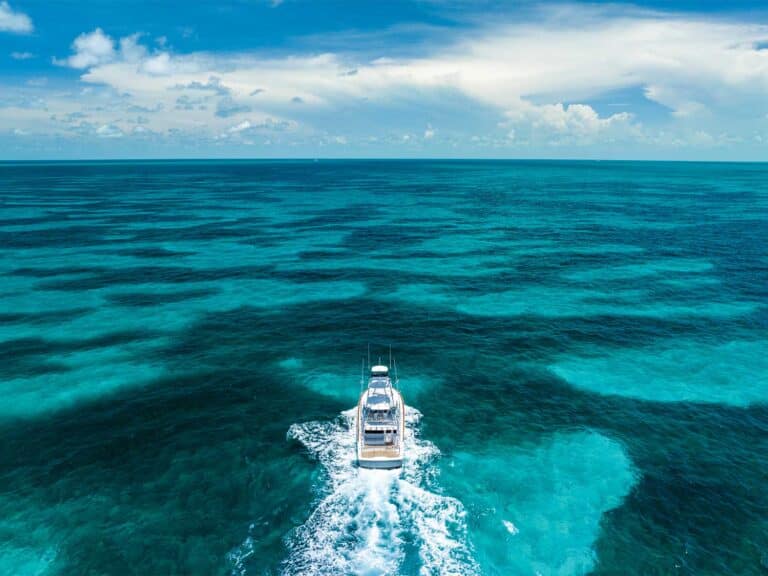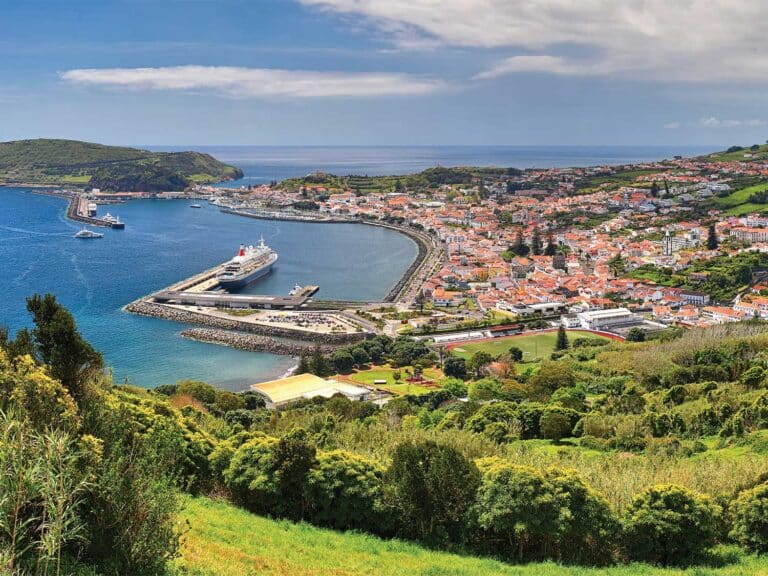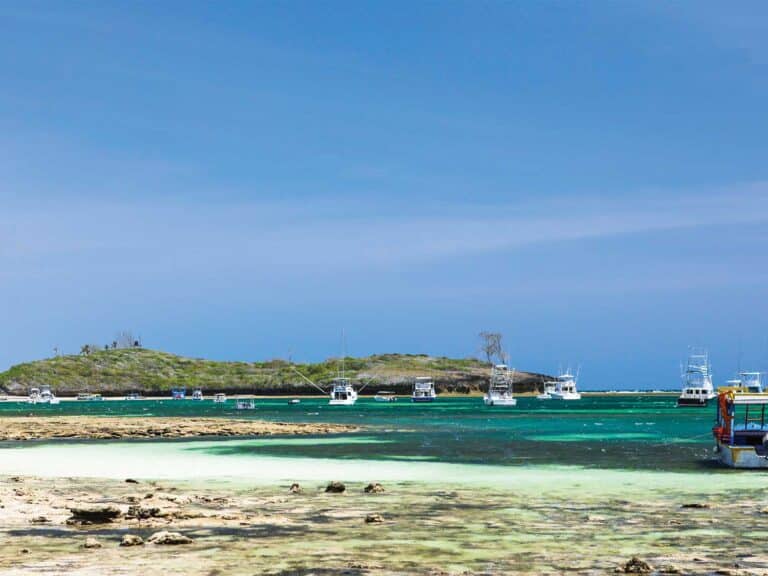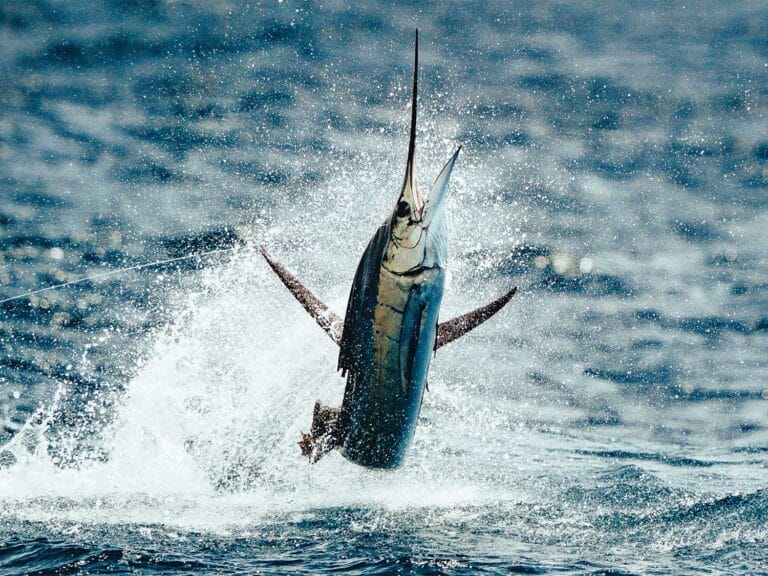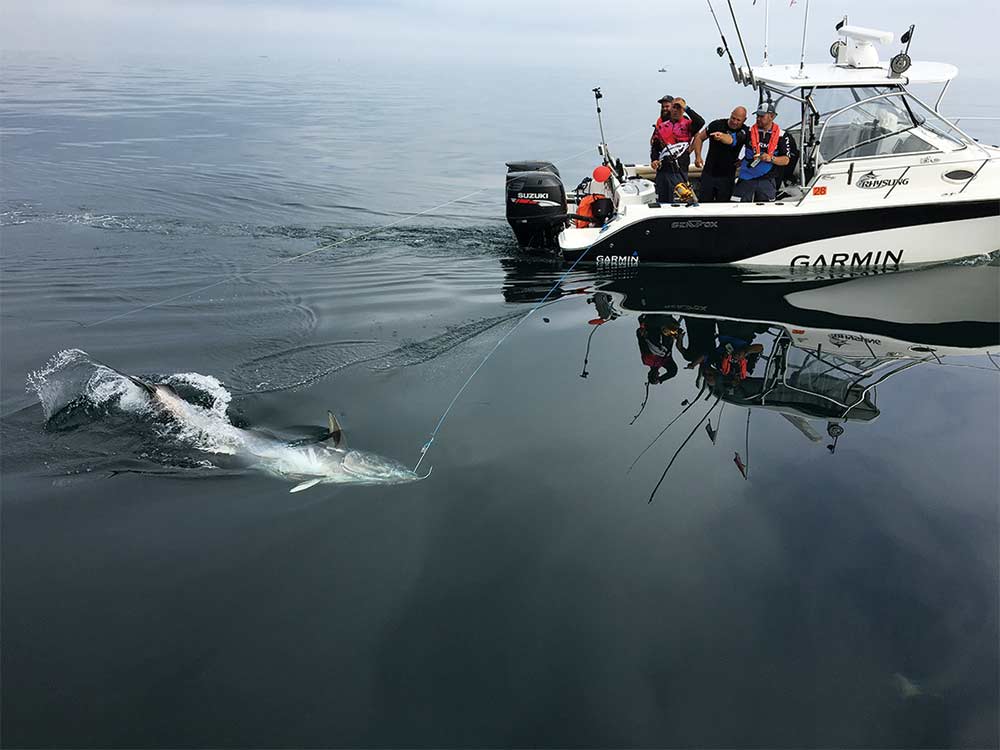
As digital editor of the Danish fishing magazine Fisk & Fri, angler and tuna enthusiast Ask Futtrup returned for a second year to the port of Skagen in the northernmost part of Denmark to take part in a bluefin tuna tagging project spearheaded by the Technical University of Denmark. Satellite tagging could reveal migratory patterns as well as potential feeding and spawning grounds. If bluefin tuna are indeed returning to the waters off Denmark, proper management — something that was clearly lacking when these fish disappeared from the area in the 1960s — needs to be developed. This is Futtrup’s account of that experience.
There had not been any tuna sightings so far when we arrived, but we were up for the challenge and excited to put what we learned last year, when we pulled the hook on a massive fish after 105 minutes of fight time, to the test. At the briefing the night before, we were told the bluefin were there and given a waypoint to the fish.
The next morning, my partner Nicolai Ditlefsen and I drove our 26-foot center-console, Nora, out of Skagen Harbor straight to the mackerel grounds. For tuna, nothing beats live bait. With 20 baits in the livewell, we headed for the fish, around 12 nautical miles north.
The VHF was full of chatter. Diva 4 reported a school of giants around the boat just 2 miles south of us in 400 feet of water, so we quickly turned around. When we arrived, the school had left the surface, but we decided to set our gear anyway.
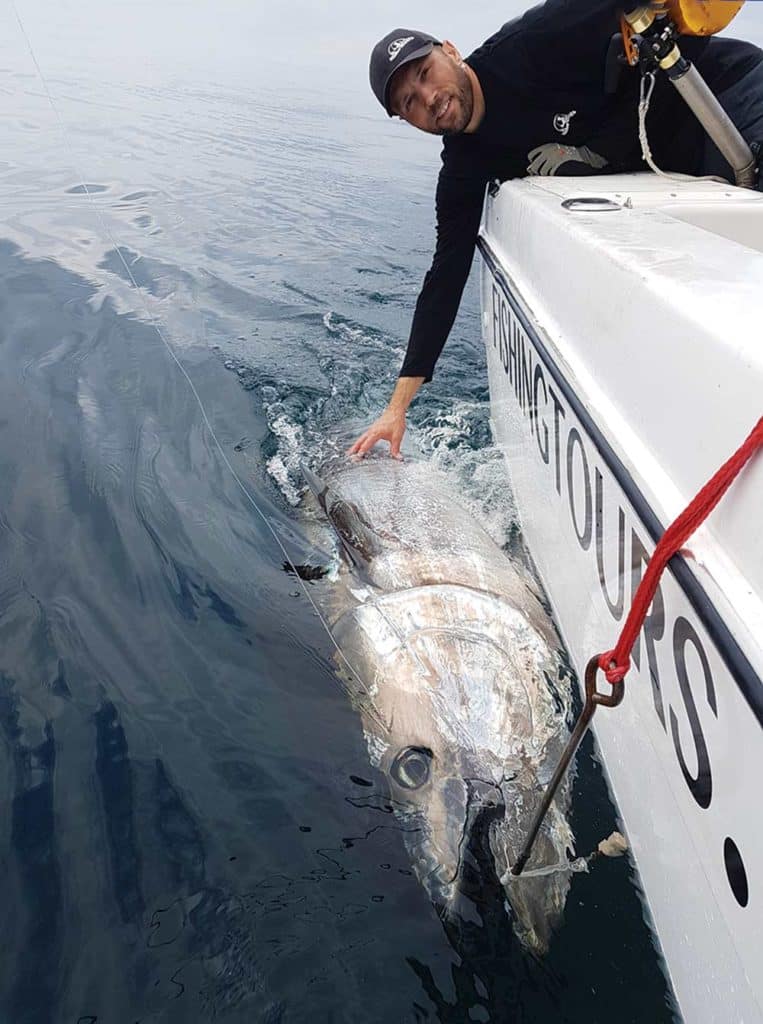
We were sending out our third bait when the reel started screaming like we had hooked up to a freight train. Immediately, we started thinking about our first objective: get the fish to the boat quickly. Making sure the line didn’t touch the hull, the captain maneuvered the boat to keep sideways pressure on the tuna, making it use its own energy.
Three and a half hours later, we called over the scientists to take blood and tissue samples and insert the satellite tag. In under a minute, the 600-plus-pound bluefin was released and swam away healthy.
Read Next: Bluefin Tuna
With no quota, there is no legal tuna fishing allowed in Denmark. The research boats were fishing under a special flag, which permitted the effort in the interest of science. In 10 days, 91 bluefin tuna were tagged and sampled by more than 400 anglers aboard 70 boats. Team Nora ended up catching, tagging and releasing seven of those 91 bluefins — all between 560 and 740 pounds — making us the top Danish boat of the fleet.
Running back to Skagen, we all agreed how lucky we were to assist in this research and were glad the bluefin had found themselves back in our waters. I hope they stick around for next year, and the one after that. —As told to Capt. Jen Copeland by Ask Futtrup


